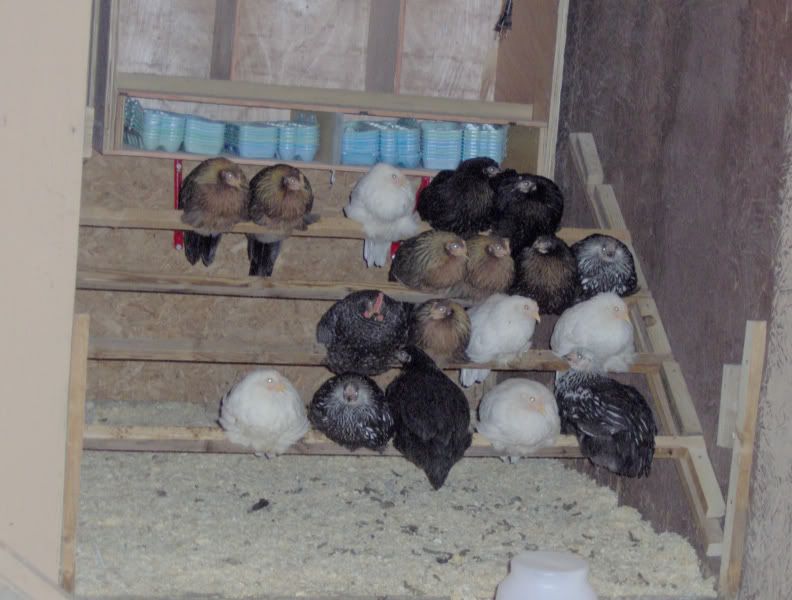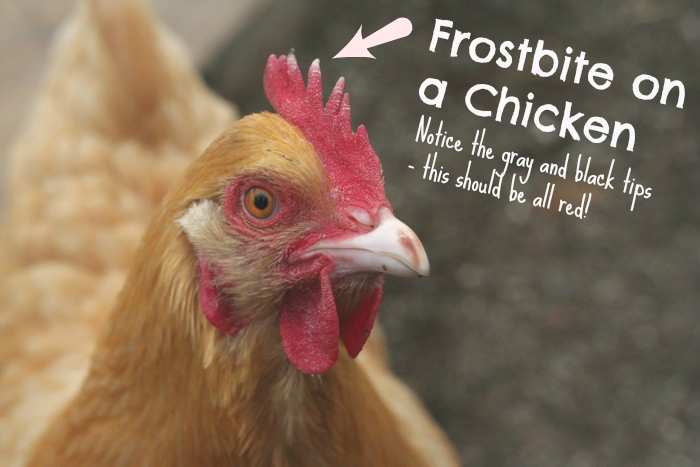
Winter finally started knocking on our Ohio town...and we managed to procrastinate on the whole winter chicken PREP.
 Winter care for chickens can be confusing to beginners and established chicken keepers alike.
There are many different schools of thought on heat vs. no heat in the coop. We are on the fence but leaning toward the no heat camp, even though temperatures can drop to below zero here (sometimes!).
Winter care for chickens can be confusing to beginners and established chicken keepers alike.
There are many different schools of thought on heat vs. no heat in the coop. We are on the fence but leaning toward the no heat camp, even though temperatures can drop to below zero here (sometimes!).
If you would like to know how we plan on keeping our flock warm, this winter, without heat... well read on my friend!
Let's talk about chicken coops and heat.
 Do you need to heat your chicken coop?
Do you need to heat your chicken coop? Well there is a short answer and a long answer.
- The short answer is NO.
- The long answer has to do with the fact that chickens can and will live very comfortably in temps that drop below zero- and this includes without supplemental heat sources.
 Chickens are not people. I know that you are thinking...DUH Kel, but sometimes this can lead to oversight. People, you and me, we can NOT survive in a non-heated building outside in subzero weather...but your chickens can.
Chickens are not people. I know that you are thinking...DUH Kel, but sometimes this can lead to oversight. People, you and me, we can NOT survive in a non-heated building outside in subzero weather...but your chickens can. Chickens will show no sign of distress in cold weather and will survive just fine in the cold, up to -10 degrees Fahrenheit (and truth be told that some chickens can do just find when temps drop lower than that).
Plus, your chickens have a cozy coop where they can stay when it gets to cold outdoors for them.
 Some interesting information, if you think that using a heat lamp is the answer to your guilt...well first and foremost (and the number 1 reason why NOT to use a Heat Lamp) is that they cause coop fires, many reported cases, in which your entire flock will parish, not to mention the spread to neighboring houses and/or outbuildings. (Yes, I am a firefighters daughter!)
Some interesting information, if you think that using a heat lamp is the answer to your guilt...well first and foremost (and the number 1 reason why NOT to use a Heat Lamp) is that they cause coop fires, many reported cases, in which your entire flock will parish, not to mention the spread to neighboring houses and/or outbuildings. (Yes, I am a firefighters daughter!) It is difficult to secure a heat lamp in order for it to not fall down. Then factor in a flying chicken knocking down the lamp or debris flying into the lamp, all of which are fire hazards.
It is difficult to secure a heat lamp in order for it to not fall down. Then factor in a flying chicken knocking down the lamp or debris flying into the lamp, all of which are fire hazards.Another important note to make is that if you use a Heat Lamp and let's say the bulb goes out or you have a power outage...you will lose your flock due to the sudden temperature change.
Chickens who are used to a warm coop in the winter need time to accommodate a sudden temperature drop.
The worst part is that you will remain completely unaware of any issue because the onset will not show until it is already to late to save your chicken(s).

If you feel strongly that your coop needs to be heated, please avoid a heat lamp and look at a flat panel heater, installed by a professional to ensure safety for your Chickens. (But heat is not necessary!)
So, HOW do Chickens survive winter?
 Valid question. Part of this process is understanding your birds, knowing what works and what doesn't and helping your flock flourish!
Valid question. Part of this process is understanding your birds, knowing what works and what doesn't and helping your flock flourish!I spoke about not having to use a heater or heat source to remain comfortable during the cold winter months, but it is fair to wonder the physics and makeup of a chicken as to why it is not needed.
Chickens Fluff.
 I know you have seen them do this probably a hundred times. We call this being a "Top Dawg Chicken" in our family. (Mind you, we are two adults and two kids under the age of 7!)
I know you have seen them do this probably a hundred times. We call this being a "Top Dawg Chicken" in our family. (Mind you, we are two adults and two kids under the age of 7!)When the chickens fluff up their feathers they create an air pocket between their feathers and their skin. This is where warm air radiates from the chicken's body and keeps them comfortable even on the coldest of nights.

Chickens also cluster together, usually on a roost, to cuddle in order to keep one another warm. Sleeping on the roost keeps the chickens off of the cold floor.
If you are still not a believer, a suggestion came to me that if you venture to your coop one cold night and put your hand under the chickens wing, or between their feathers, next to the skin...you will feel your chickens warmth and have that peace of mind (or Ah Ha moment!).
Next, let's talk drafts!
 The subject of drafts is a pretty serious one.
The subject of drafts is a pretty serious one.Drafts can cause your toasty, warm chicken to become frigid and cold...very quick! If air is blowing on your chickens, this disrupts the warm pocket of air that your chickens have created when fluffing their feathers and will cause them to catch a chill.
You want to eliminate drafts within your coop...but you do NOT want to seal off all air completely due to ventilation.
Confusing, right!
Eliminate drafts by closing the chickens entrance to the coop at night and on very cold days. You will also want to insulate any windows you have in your coop using caulk and/or a barrier block. This material can be cardboard, wood or plastic.
A good way to differentiate between a draft and ventilation is to know that a draft is a wind or breeze that is blowing on your chickens.
A small, light draft is enough to disrupt feathers and cause a chill. When you leave a door open in the coop, it is like you put a fan on your flock for the night.
Ventilation is all about air circulation throughout the coop.
We want to prevent drafts but we still need to make sure that air is circulating in and out of our coop so that our chickens can remain in good health.
So, HOW do you VENTILATE your COOP?
 We need to make sure our coop is well insulated and closed enough to keep out drafts but allow air to still be able to come in and leave the coop.
We need to make sure our coop is well insulated and closed enough to keep out drafts but allow air to still be able to come in and leave the coop.This is mandatory in order for dust, CO2, moisture and ammonia to escape and bring in fresh air for the birds to breath. The best way that we have found to block a draft, but allow for proper ventilation is to cut some small windows where the walls meet the ceiling.
The windows only need to be about 1-2 inches tall but however wide that you want. They can be cut between the studs and secured with hardware cloth. This is important because small animals can squeeze through small spaces and the chicken wire and/or screening will not be able to keep these predators out.
The overhang from the roof outside the windows will prevent winds from blowing in, but the open windows will allow polluted air to get out and fresh air to get in.
Frostbite and chickens, what you need to know.
 We hear about frostbite and immediately panic. Natural human reaction, and one that I won't discourage you from having.
We hear about frostbite and immediately panic. Natural human reaction, and one that I won't discourage you from having.Frostbite is caused when cold combines with moisture.
If your coop is just cold then frostbite will not form. But, moisture builds within the coop from chickens breathing, pooping or just water spills, if you allow water in your coop. Moisture is inevitable. But, if your coop is airtight, this moisture has no place to escape to and combine this moisture with a sudden onset of cold...here you have a perfect environment for FROSTBITE.
To prevent frostbite in large comb birds, you can apply a thick layer of petroleum jelly on the comb to protect this from the cold.
And because you all know that I am an avid reader and book promoter, I wanted to share some great reading that has helped me in my chicken research and is sure to help you on your own journey!
(click on the book to be directed to the link!)
HAPPY CHICKEN-ING YA'LL!
HAPPY CHICKEN-ING YA'LL!







